Click on images to enlarge
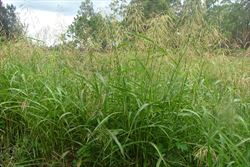
infestation (Photo: Sheldon Navie)
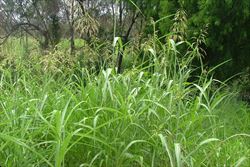
habit (Photo: Sheldon Navie)
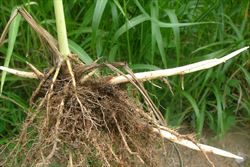
the very distinctive white underground stems of this species (Photo: Sheldon Navie)

the large bright green leaves with prominent whitish mid-veins (Photo: Sheldon Navie)

close-up of stem and base of leaf blade, showing the membranous ligule (Photo: Sheldon Navie)
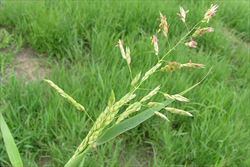
a young seed-head (Photo: Sheldon Navie)
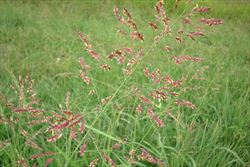
seed-head in flower (Photo: Sheldon Navie)

close-up of flower spikelets (Photo: Sheldon Navie)

immature flower spikelets (Photo: Sheldon Navie)
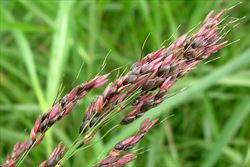
close-up of mature flower spikelets with twisted awns (Photo: Sheldon Navie)
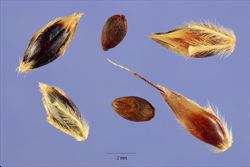
close-up of mature flower spikelets and seeds (Photo: Steve Hurst at USDA PLANTS Database)
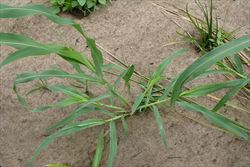
young plant (Photo: Sheldon Navie)
Scientific Name
Sorghum halepense (L.) Pers.
Synonyms
Holcus halepensis L.
Family
Gramineae (South Australia)Poaceae (Queensland, New South Wales, the ACT, Victoria, Tasmania, Western Australia and the Northern Territory)
Common Names
Aleppo, Aleppo grass, Aleppo milletgrass, Arabian millet, Cuba grass, Cubagrass, Egyptian grass, Egyptian millet, evergreen millet, false Guinea grass, false Guineagrass, Johnson grass, Johnsongrass, maiden-cane, maidencane, means grass, meansgrass, millet grass, Morocco millet, St Mary's grass, Syria grass, Syriagrass
Origin
The exact native range of this species is obscure. It is thought to be native to north-eastern Africa, the middle-east, western Asia and Indian Sub-continent.
Naturalised Distribution
Widely naturalised, particularly in the wetter parts of mainland Australia. It is most prominent in the coastal and sub-coastal regions of New South Wales and in south-eastern Queensland. Relatively common in Victoria, the ACT, south-eastern South Australia and south-western Western Australia. It also has a scattered distribution in other parts of these states.
Widely naturalised overseas, including in North America (i.e. southern Canada, the USA and Mexico), Central America, South America, south-eastern Asia (i.e. the Philippines, Thailand, Indonesia and Papua New Guinea), New Zealand and on numerous Pacific islands (e.g. Fiji, French Polynesia, Guam, Hawaii, New Caledonia, Palau and Tonga).
Notes
Johnson grass (Sorghum halepense) is sometimes regarded as an environmental weed in New South Wales and Victoria. It was recently listed as a priority environmental weed in two Natural Resource Management regions.

